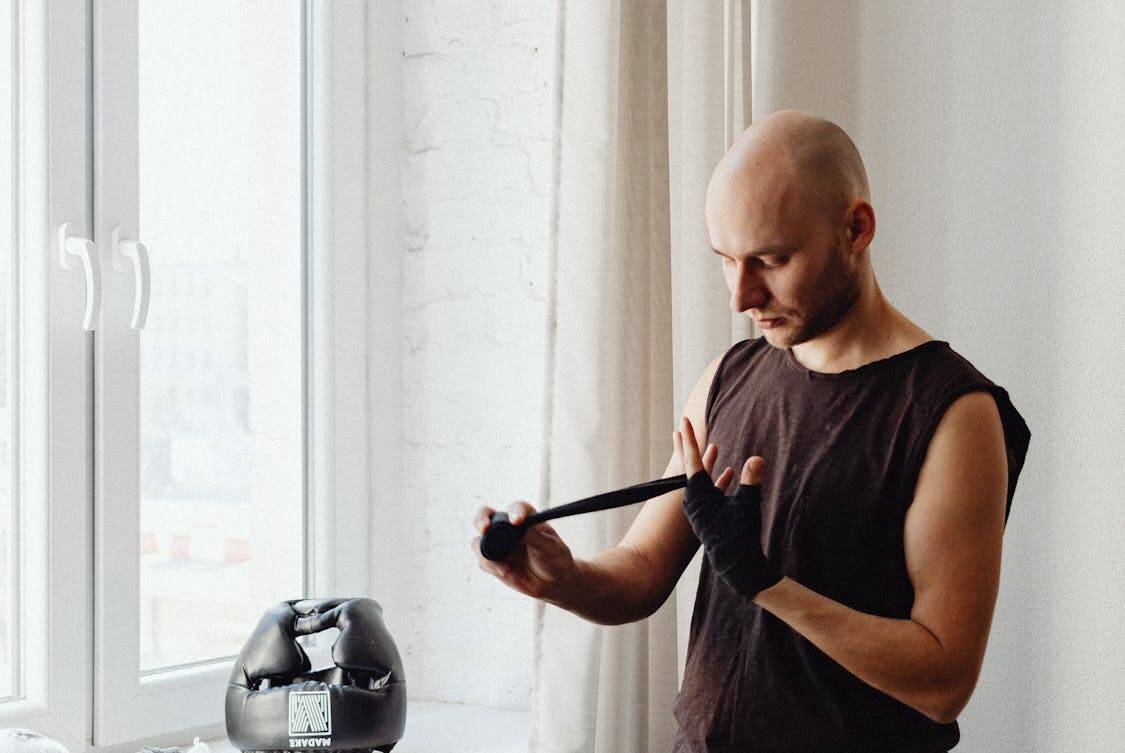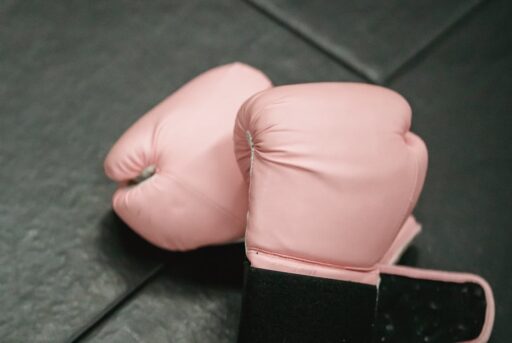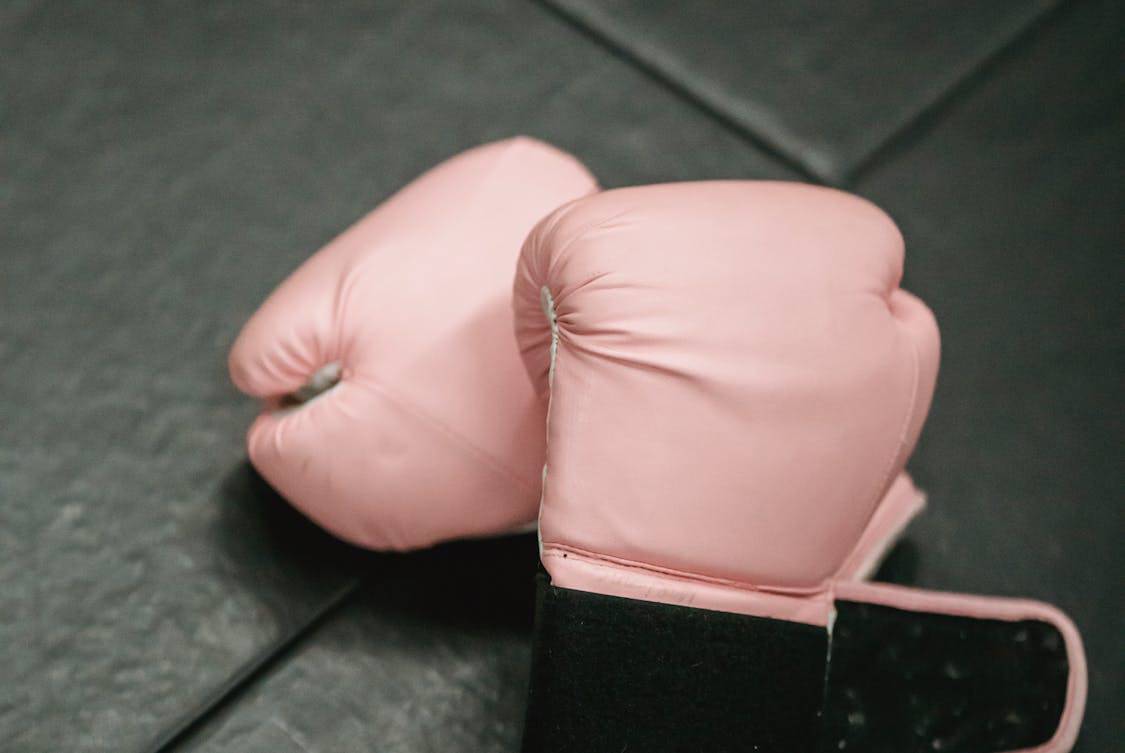Creating a home boxing gym is a fantastic way to stay fit, relieve stress, and learn self-defense skills—all from the comfort of your own space. This guide will walk you through the steps and gear you need to make your boxing dreams a reality.
Choosing the Right Space
First, consider the best location in your home. You’ll need enough room to move around freely without bumping into furniture or walls.
A garage, basement, or even a spare room can make for an ideal boxing space. Aim for a space that offers privacy and has good ventilation, so you can train effectively.
Remember, flooring plays an essential role in your training. A hard surface like concrete can be tough on your joints, so think about adding mats or rubber flooring.
This will provide adequate cushioning and grip for your footwork, ensuring safety during intense workouts.
Essential Boxing Gear
Boxing Gloves
Gloves are the most critical gear for any boxer. They protect your hands and wrists during training and sparring. When choosing gloves, remember that size and weight matter.
Beginners typically opt for 14-16 ounce gloves for training, which offer ample protection and support. Make sure they fit snugly without being overly tight.
If you’re looking for a reliable and durable pair to start your training, Revgear boxing gloves are a top choice for both beginners and seasoned fighters.
Hand Wraps
Before slipping on those gloves, hand wraps are a must. They provide additional support and protect your knuckles and wrist.
Look for breathable options, as this will keep your hands comfortable and reduce moisture buildup during your workouts. Learning how to wrap your hands correctly is vital; there are plenty of tutorials available to guide you.
Heavy Bag
A heavy bag is fundamental for developing punching power and technique. For a home setup, consider getting a freestanding heavy bag or one that can be hung from a sturdy beam or ceiling mount.
When selecting a bag, choose one that weighs approximately half your body weight for optimal training. This will provide the right resistance for strikes.
Speed Bag
Adding a speed bag to your gym can enhance hand-eye coordination, timing, and rhythm. Speed bags are usually smaller and mounted higher than heavy bags.
They come in various sizes, so pick one based on your skill level. Beginners might want to start with a larger bag to get accustomed to the rhythm before moving to a smaller option.
Punch Mitts
If you have a training partner, punch mitts are an excellent addition. They allow for various drills and help improve accuracy and speed. Look for mitts that fit comfortably and provide enough cushion to absorb impacts.
They come in different styles, from curved to flat, so find ones that work best for your training routine.
Additional Gear for Enhanced Training
Skipping Rope
A skipping rope is a classic and effective tool for improving cardiovascular fitness and footwork. It’s portable, easy to store, and can be used for warm-ups and conditioning.
When selecting a rope, look for one that allows for smooth rotation and is adjustable to your height.
Boxing Shoes
Investing in quality boxing shoes can significantly impact your training. These shoes provide the necessary grip and support for swift movements and lateral footwork.
Look for lightweight options that allow for agility while providing ankle support.
Mirrors
Consider adding a mirror to your gym for self-assessment. Watching your form while practicing punches and footwork can help correct mistakes and improve technique.
If space allows, a full-length mirror is ideal, but even a smaller one can provide valuable feedback.
Timer or Interval App
A timer is essential for structuring your workouts. Many boxing workouts involve alternating between rounds of intense activity and rest.
You can easily find a timer app on your smartphone tailored for interval training. This will help you keep track of your rounds and ensure you’re getting the most out of your sessions.
Organizing Your Space
Once you have all your gear, organization is key. Create designated areas for different activities, such as a punching station for the heavy bag and a warm-up area for skipping rope.
Keep your gloves, wraps, and other gear easily accessible to save time and maintain motivation.
Consider using wall racks or storage bins to keep your space tidy. A clutter-free environment can promote focus and make your workouts more enjoyable.
Developing a Training Routine

Establishing a structured training routine is essential for progress. Start with a balanced mix of cardio, strength training, and skill work. Aim for at least three to five sessions a week, depending on your fitness goals.
Warm-Up
Always begin with a proper warm-up to prepare your body for intense activity. This can include jumping rope, dynamic stretches, or shadow boxing for about 10 minutes. Warming up increases blood flow to your muscles and reduces the risk of injury.
Skill Work
Focus on techniques such as footwork, punches, and defensive movements. Spend time shadow boxing in front of a mirror to refine your form.
Use the heavy bag to practice combinations and power strikes, ensuring you’re developing both accuracy and strength.
Conditioning
Conditioning is vital for endurance and performance. Incorporate high-intensity interval training (HIIT) sessions with short bursts of activity followed by brief rest periods.
Mix in exercises like burpees, squats, and push-ups to enhance overall fitness.
Cool Down
After each session, include a cool-down period. Stretching helps alleviate tightness and aid recovery. Spend about 5-10 minutes focusing on major muscle groups used during your workout.
Safety Precautions
Always prioritize safety while training. Wear your hand wraps and gloves, and never hit the bag with full force until you’re comfortable with your form.
If you plan to spar, ensure both participants are wearing proper protective gear, including headgear and a mouthguard.
Stay hydrated throughout your workouts and listen to your body. If something doesn’t feel right, take a break or adjust your training intensity.
Keeping a clear head helps create a more effective and enjoyable boxing experience.
Finding Community
While training at home can be rewarding, don’t underestimate the value of community. Connecting with fellow boxing enthusiasts, whether in-person or online, can enhance your motivation and knowledge.
Look for local boxing gyms or online forums to share tips, ask questions, or find training partners.
Consider participating in local events or competitions when you feel ready. These experiences can provide new challenges and help you track your progress against others.













